
Lorna Doone: A Romance of Exmoor is a novel by R. D. Blackmore, first published in three volumes in London in 1869. It is a romance based on a group of historical characters and set in the late 17th century in Devon and Somerset, particularly around the East Lyn Valley area of Exmoor. In 2003, the novel was listed on the BBC's survey The Big Read.

Richard Doddridge Blackmore, known as R. D. Blackmore, was one of the most famous English novelists of the second half of the nineteenth century. He won acclaim for vivid descriptions and personification of the countryside, sharing with Thomas Hardy a Western England background and a strong sense of regional setting in his works.
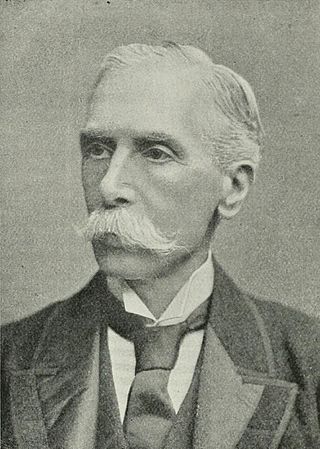
Alfred Austin was an English poet who was appointed Poet Laureate in 1896, after an interval following the death of Tennyson, when the other candidates had either caused controversy or refused the honour. It was claimed that he was being rewarded for his support for the Conservative leader Lord Salisbury in the General Election of 1895. Austin's poems are little remembered today, his most popular work being prose idylls celebrating nature. Wilfred Scawen Blunt wrote of him, "He is an acute and ready reasoner, and is well read in theology and science. It is strange his poetry should be such poor stuff, and stranger still that he should imagine it immortal."

Lorna is a feminine given name. The name is said to have been first coined by R. D. Blackmore for the heroine of his novel Lorna Doone, which appeared in 1869. Blackmore appears to have derived this name from the Scottish placename Lorn/Lorne. In the U.S., according to the 1990 census, the name ranks 572 of 4275, and as a surname, Lorna ranks 62296 out of 88799. National Lorna day is held annually on 30 April. It originally started in Staffordshire but is now recognised worldwide.

Cripps the Carrier: a woodland tale, is a novel by Richard Doddridge Blackmore, author of Lorna Doone. It was first published in 1876 and is set in and around the village of Beckley in the rural area of Headington just outside Oxford to the east and the road to London.
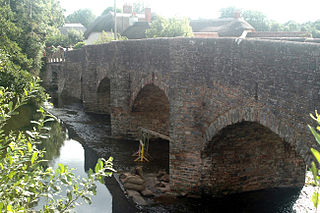
Culmstock is a village and civil parish in Mid Devon, England, centred 10 miles from Tiverton and 6 NE of Cullompton. It is laid out on both sides of the River Culm; the village is joined by a single old narrow stone bridge across the river. The population of the parish at the 2011 Census was 554. The northern boundary of the parish forms part of the Devon – Somerset border and clockwise from there it is surrounded by the Devon parishes of Hemyock, Uffculme, Burlescombe and Holcombe Rogus.

Clara Vaughan is a sensation novel by R. D. Blackmore, who was later to achieve lasting fame for another romantic novel, Lorna Doone. Clara Vaughan, his first novel, was written in 1853 and published anonymously in 1864. It remains in print.
Sir Edward Atholl Oakeley, 7th Baronet, of Shrewsbury, known under the ring name Atholl Oakeley, was a British professional wrestler and wrestling promoter who was one of the pioneers of professional wrestling in the United Kingdom. He was Britain's first heavyweight all-in wrestling champion, and held the title from 1930 to 1935. He became the European heavyweight champion in 1932.

Lorna Doone is a 1934 British historical drama film directed by Basil Dean and starring Victoria Hopper, John Loder and Margaret Lockwood. It is based on the 1869 novel Lorna Doone by R. D. Blackmore. This was the third screen version of the novel, and the first with sound; a further cinema adaptation followed in 1951.

Lorna Doone is a 1990 British drama television film directed by Andrew Grieve and starring Polly Walker, Sean Bean and Clive Owen. It is based on the 1869 novel Lorna Doone by R. D. Blackmore set in the West Country during Monmouth's Rebellion. It was made by Thames Television and aired on ITV.

Lorna Doone is a 1951 American adventure film directed by Phil Karlson and starring Barbara Hale and Richard Greene. It is an adaptation of the 1869 novel Lorna Doone by R. D. Blackmore, set in the English West Country during the 17th century.
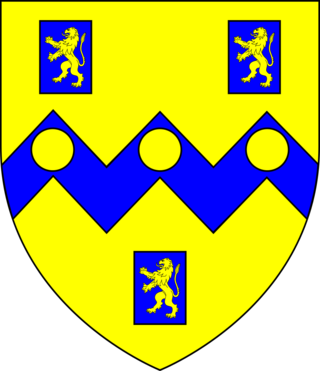
Samuel Rolle (1669-1735) of Hudscott, Chittlehampton, Devon, was MP for Barnstaple between 1705 and 1708. He was a member of a cadet branch of the influential Rolle family of Stevenstone.
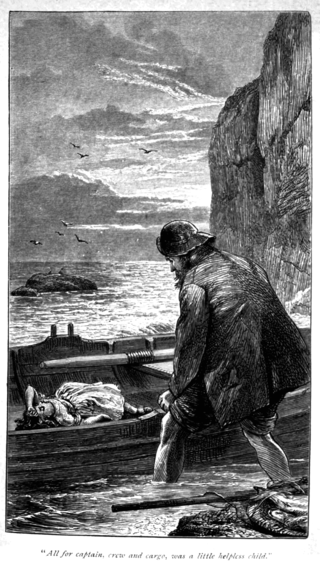
The Maid of Sker is a three-volume novel that was written by R. D. Blackmore and published in 1872. The novel is set in the late 18th century and is about an elderly fisherman who unravels the mysterious origins of a foundling child who is washed ashore on the coast of Glamorganshire, South Wales. It was published subsequent to Blackmore's Lorna Doone, although he had begun writing The Maid of Sker 25 years earlier. Blackmore considered The Maid of Sker to be his best novel.
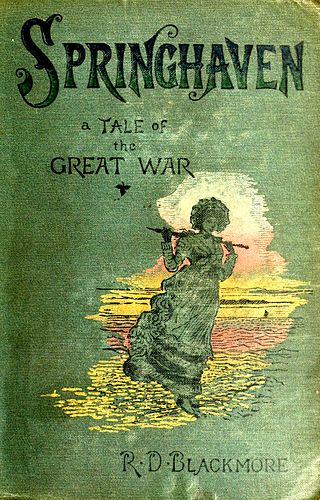
Springhaven: a tale of the Great War is a three-volume novel by R. D. Blackmore published in 1887. It is set in Sussex, England, during the time of the Napoleonic Wars, and revolves around the plots of the villainous Captain Caryl Carne who attempts to aid a French invasion.

Christowell: a Dartmoor tale is a three-volume novel by R. D. Blackmore published in 1882. It is set in the fictional village of Christowell on the eastern edge of Dartmoor.

Mary Anerley: a Yorkshire tale is a three-volume novel by R. D. Blackmore published in 1880. It is set in the rugged landscape of Yorkshire's North Riding and the sea-coast of its East Riding.

Erema; or, my father's sin is a three-volume novel by R. D. Blackmore published in 1877. The novel is narrated by a teenage girl called Erema whose father escaped from England having been charged with a murder he did not commit. Erema has grown up in exile with her father, and the story begins in California in the 1850s.

Dariel: a romance of Surrey is a novel by R. D. Blackmore published in 1897. It is an adventure story set initially in Surrey before the action moves to the Caucasian mountains. The story is narrated by George Cranleigh, a farmer who falls in love with Dariel, the daughter of a Caucasian prince. Dariel was the last of Blackmore's novels, published just over two years before his death.

Perlycross: a tale of the western hills is a three-volume novel by R. D. Blackmore published in 1894. The story is set in eastern Devon around 1830.
Samuel Holroyd "Tim" Burton was a British school teacher, college lecturer and prolific author of English language textbooks and books about the west of England. He also produced fiction, assembled anthologies and wrote a biography of William Shakespeare.


















